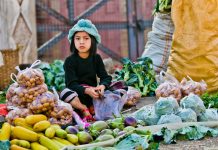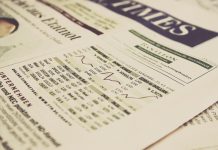
A new survey revealed that in 10 Americans struggle to afford food and other essentials during the coronavirus pandemic.
Data from the latest Household Pulse Survey showed that 10% of Americans, 22.3 million, admitted that they sometimes or often did not have enough to eat within the past week. The survey was held between August 19 and 31, 2020 and published Wednesday by the US Census Bureau.
The rate of food insecurity is several times higher than recorded last year. Food security refers to the lack of reliable access to a sufficient quantity of affordable food. Meanwhile, only about 3.7% of Americans said they sometimes or often did not have enough to eat throughout 2019, based on a new USDA report also published on Wednesday.
Joseph Llobrera, director of research for the food assistance team at the Center on Budget and Policy Priorities, explained that while the comparison is not quite “apples to apples” because the USDA data is dated 2019 and the Pulse Survey is based on the past seven days, the increase in overall food insecurity is worth noting.
“The comparison is actually conservative,” Llobrera says. “If the Pulse [survey] was to ask about the last six months, or since the start of the pandemic, it would probably pick up quite a bit.”
About 14% of adults living with children said that the children in their household sometimes or often did not eat enough over the past week because the family is not able to afford food.
CBPP researchers consider food insecurity more pronounced when households claim that children are not eating well.
Moreover, 24% of parents reported being concerned in July about their children not returning to school full-time in the fall and not being able to provide enough food for them to eat at home, according to the Kaiser Family Foundation’s July health tracking poll of over 1,100 US adults.
“People are struggling out there,” Llobrera says. “These are historic levels of hardship.”
Global food prices
Meanwhile, global food prices increased for the third straight month in August, according to the Food and Agriculture Organization of the United Nations.
Global food prices reportedly hit their highest levels since February. The FAO Food Price Index monitors the global prices of the most commonly traded food products.
The increase in global food prices was attributed to strong demand and a weaker dollar, according to the FAO.
China’s Bureau of Statistics reported that the country’s food prices increased by 11.2% from a year ago in August on the back of high pork prices due to the African swine fever outbreak. Pork prices increased by 52.6% from a year ago.
Data showed that vegetable prices soared by 6.4% from July. Egg prices increased by 11.3% in the same period due to seasonal demand surpassing low inventory levels.
Experts explained that while there is no critical food shortage, farms have been affected as the coronavirus pandemic damaged supply chains and slowed down movements.
“As the coronavirus crisis unfolds, disruptions in domestic food supply chains, other shocks affecting food production, and loss of incomes and remittances are creating strong tensions and food security risks in many countries,” The World Bank previously said.






